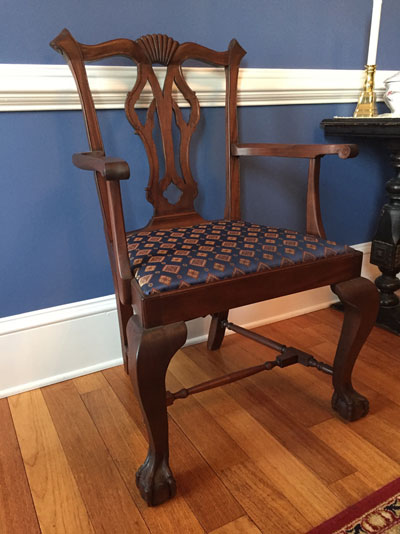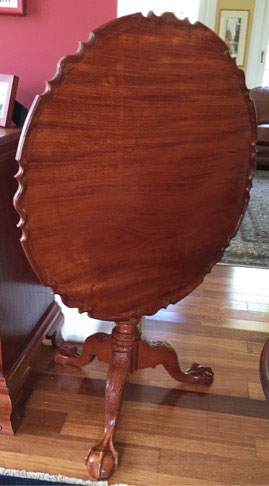|
I'm often asked how long I've been woodworking. I completed my first woodworking project when I was in the 6th grade, but didn't have much opportunity to do any serious woodworking until many years later. As a medical student, I couldn't afford new furniture, so I furnished my house with discarded “antiques” that I could restore.
Having moved several times in my life, I always made sure that I had at least some area in the house in which to do some woodworking. When I moved to a horse farm in the mid 1980s, I had an entire building that became my shop, but I didn't have many tools. I retired from my surgical practice in the late 1990s and helped a medical device manufacturer in New Jersey develop surgical devices for the next 12 years. During that time, as much as possible, I spent evenings in my basement workshop where my tool collection grew and my skills evolved.
Shortly after retiring in 2010, I began taking courses at Boston's North Bennet Street School and quickly realized two things. First, everything that I had built up to that point was not particularly well-made. Secondly, I realized that I had fallen in love with the Queen Anne, Chippendale and Federal styles. I especially liked the Newport pieces made by the Goddard and Townsend families. I wanted to spend a lot of time reproducing these pieces.

|
After a 1-month course in chair making at the North Bennet Street School, I made a set of 8 Chippendale chairs for my dining room. In addition to the complex joinery involved in attaching the side rails and arm rests to the posts, these required extensive carving for the top rails, back splats, cabriole legs and arm rests. The wood is mahogany, stained dark to match the table.

|
Above is a copy of a Newport block front bureau table. The original is at Winterthur in Delaware and attributed to John Townsend. I made this from a single board of Brazilian mahogany that was 32 inches wide and 16 feet long. I had a 32-inch square left over that I used for the top of a Philadelphia style tilt-top tea table seen below. Research for this piece took six months and required visits to four museums. The convex shells on the top drawer are applied, while the concave shells on the door and top drawer are carved into those parts. The hardware is from Ball and Ball in Pennsylvania. Poplar was used for the secondary wood and the finish is tung oil and shellac.

|
This Philadelphia tilt-top tea table above has a 32-inch diameter top made from a single board of Brazilian mahogany. This top came from wood left over from my block front bureau table. The legs and post are hand carved. The finish is tung oil and shellac.

|
The clock above is a copy of a Newport tall case clock attributed to John Townsend. The primary wood is African mahogany. The door blocking and lower panel are of crotch mahogany. The flaming finials are turned and then carved. The shell on the door is applied. The face was painted by Theresa Gritti, my wife's sister. Pine was used as the secondary wood. The finish is tung oil and shellac.
Woodworking fulfills many of the things that I loved about surgery. It provides endless opportunities for research. It also involves problem solving, a need for precision, attention to detail, an opportunity to work with my hands and a great deal of satisfaction from a job well done. I've spent many hours in museums all over the east coast, doing research on pieces that I want to make. Research on some pieces has taken up to 6 months. I've had the opportunity to remove drawers, take photographs from all angles, measure and also see where the masters of the past struggled to get things just right. My wife has gotten used to seeing me lie on a museum floor to look under a table so that I can see the joinery.
Return to the
Wood News Online
front page
|